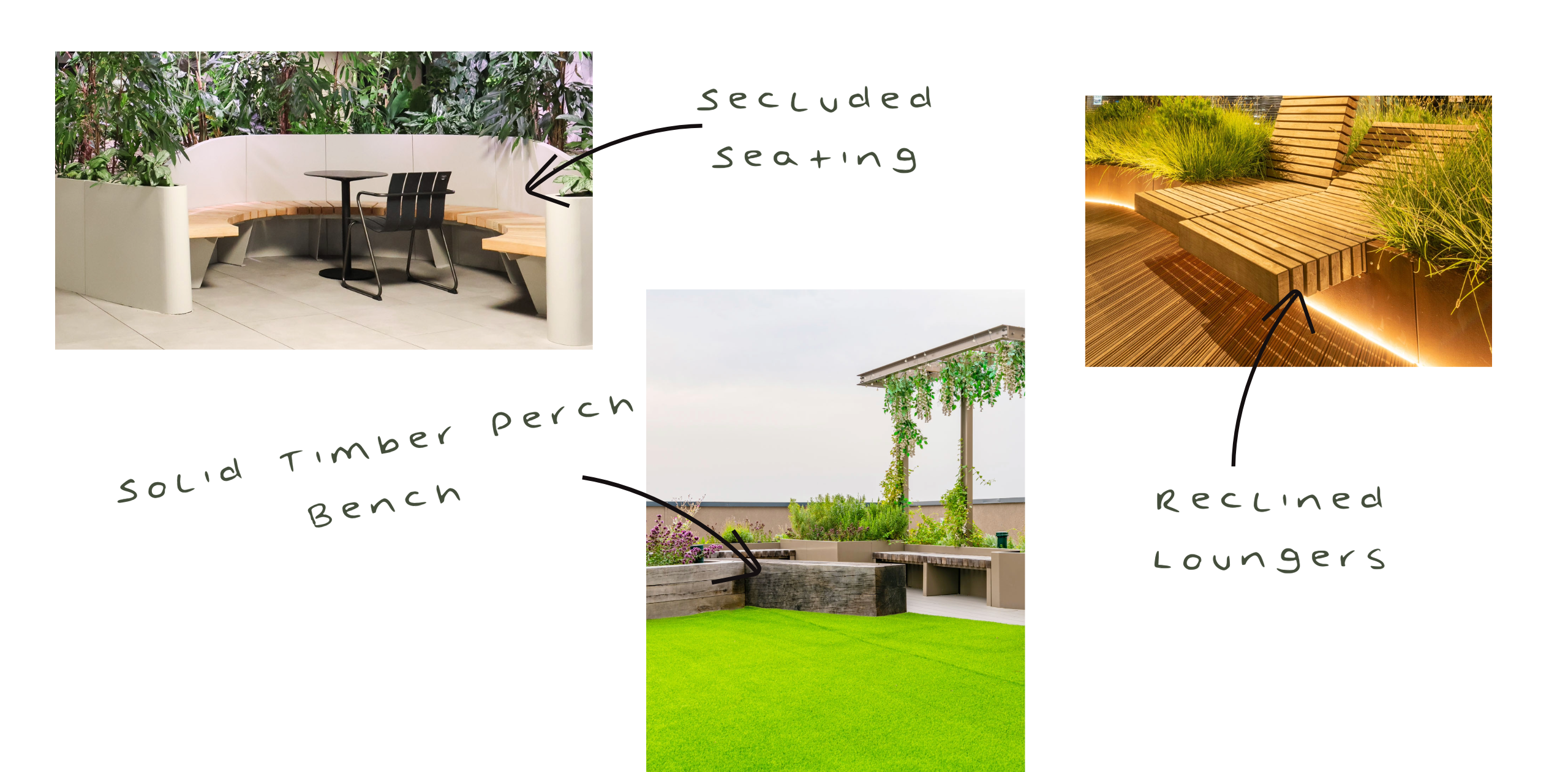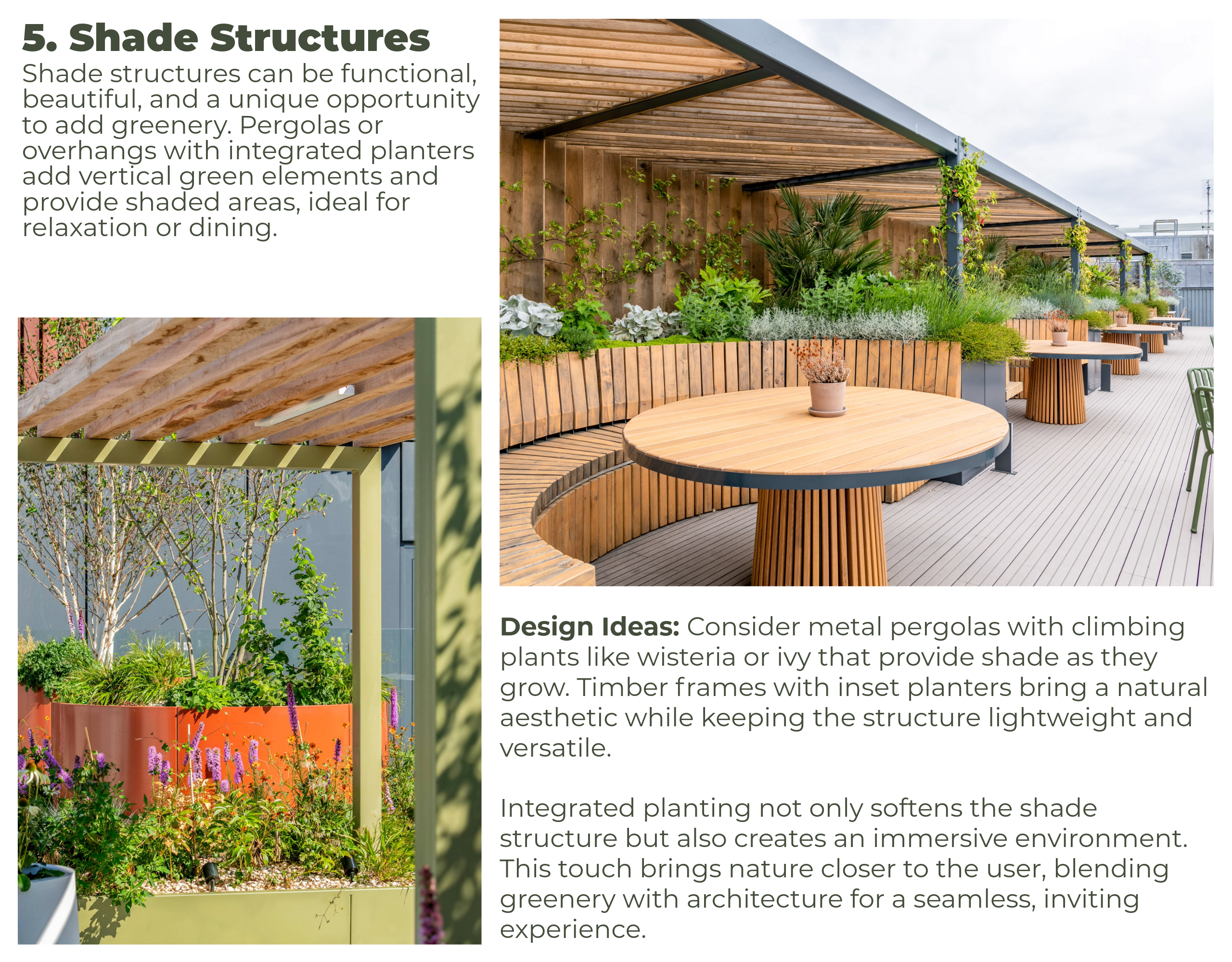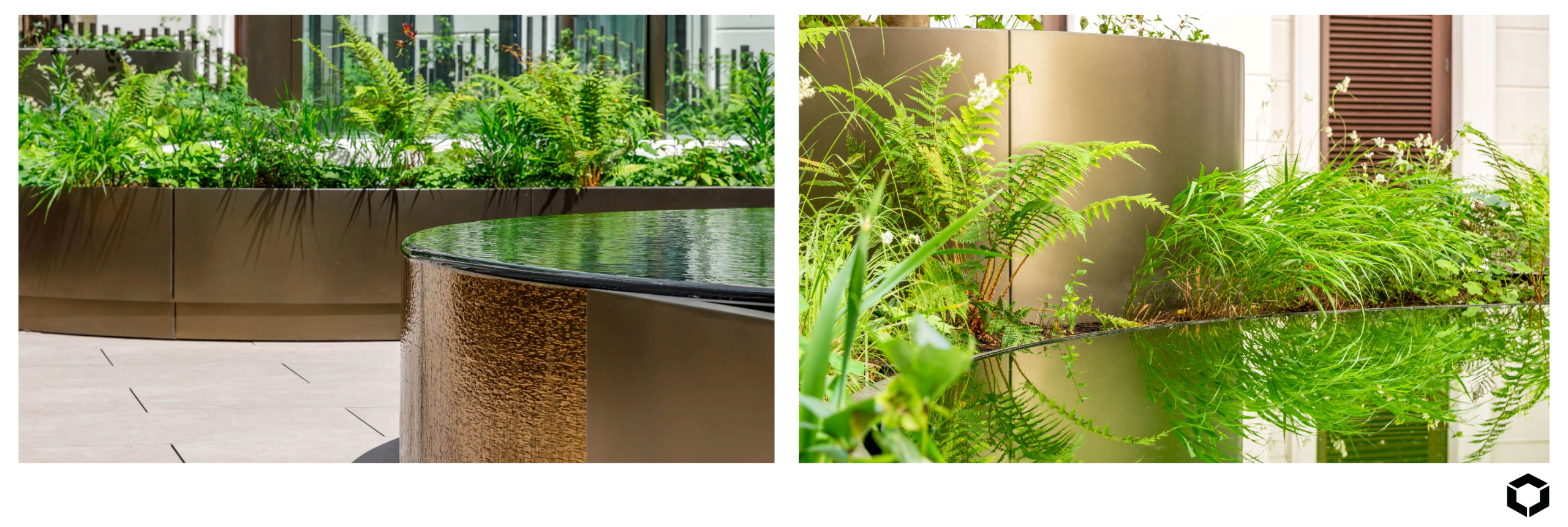
Roof terraces have come a long way from simple outdoor seating areas. As the desire for green spaces grows, designers are challenged to elevate rooftops into dynamic, experiential environments. From sculptural forms to functional art, here are seven innovative ideas to help you create a roof terrace that truly stands out.
Why settle for conventional benches when seating can double as an artistic statement? Sculptural seating blurs the line between form and function, providing both comfort and visual intrigue.
Design Ideas: Consider custom timber benches with curved or modular designs. Think asymmetrical forms or organic shapes that make seating feel like part of the landscape.
Sculptural seating turns a functional element into a focal point, adding an element of surprise. It draws visitors in, creating places to sit, gather, and engage with the terrace in a new way.

Incorporating edible plants into rooftop gardens combines aesthetics with sustainability, offering a unique, sensory experience. This approach allows visitors to enjoy the scent of fresh herbs, the visual appeal of flowering vegetables, and even the taste of the terrace itself.
Design Ideas: Create raised beds with vegetables and herbs, or use vertical planters along walls with seasonal greens and climbers. Use Corten or timber planters for durability and visual contrast.
An edible garden is both practical and engaging. It connects people to the landscape while emphasizing sustainability, which resonates with today’s eco-conscious users.
Lighting transforms any space, but interactive lighting on a roof terrace can take the experience to another level. Incorporate dynamic lighting that responds to movement, changes colour, or can be adjusted for different times of the day.
Design Ideas: Use inset LED lights along pathways, under seating, or around planters. Choose lighting that can shift from warm to cool tones, or set lights to respond to touch or motion for a fun, interactive element.
Interactive lighting adds an element of surprise and flexibility, creating both daytime and nighttime ambience. It also invites visitors to engage with the space in a new way, enhancing the terrace’s overall atmosphere.

The fourth of our roof terrace ideas is to encorporate multi-level elements which can make even small rooftop spaces feel expansive and immersive. By creating various “zones” on different levels, you add depth and provide distinct views and experiences within the same space.
Design Ideas: Use planters, timber decking, or even stone steps to create slight elevation changes. Arrange seating or plantings at different heights to provide visual variety and a sense of exploration.
Multi-level terraces add spatial dimension and natural rhythm, breaking up the layout and offering diverse vantage points. Each level can offer something unique, whether it’s a view, a different planting, or seating.

Water features add a calming auditory and visual element, making the terrace feel like a retreat from urban life. Even a small water feature can have a big impact, bringing tranquillity and a sense of luxury to the rooftop.
Design Ideas: Install a compact reflective pool, a small fountain, or a narrow water channel along a wall or path. Consider materials like stone or metal that can reflect light beautifully.
Water features have a universally calming effect, adding a new sensory dimension to the terrace. They also mirror the sky or city lights, subtly connecting the rooftop with its surroundings.

Rooftops are evolving into multi-use spaces that can host events, gatherings, or private moments. Customizable zones with modular elements allow users to rearrange spaces according to their needs, making the terrace versatile and adaptable.
Design Ideas: Use modular seating or movable planters to create flexible zones. Introduce lightweight furniture that can be reconfigured, or add retractable walls or screens for added privacy.
Customizable zones transform the terrace into a multipurpose environment, allowing it to serve as an intimate gathering place, a social space, or a quiet retreat. Flexibility enhances the rooftop’s value, catering to diverse needs.
Hopefully these roof terrace ideas have got your creative juices flowing. Designing a roof terrace that stands out means moving beyond the basics and creating a space that combines beauty, functionality, and a bit of surprise. By incorporating sculptural seating, multi-level green zones, or interactive lighting, you can transform rooftops into spaces that captivate, inspire, and invite people to return again and again.
Be further inspired by other designers here.
Back to Knoweldge Base.